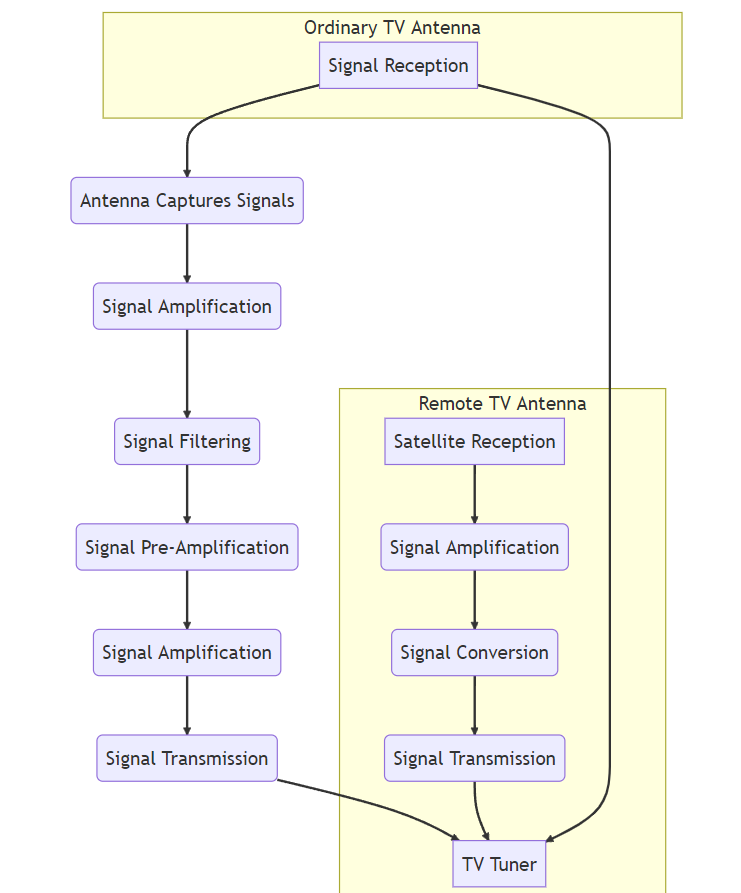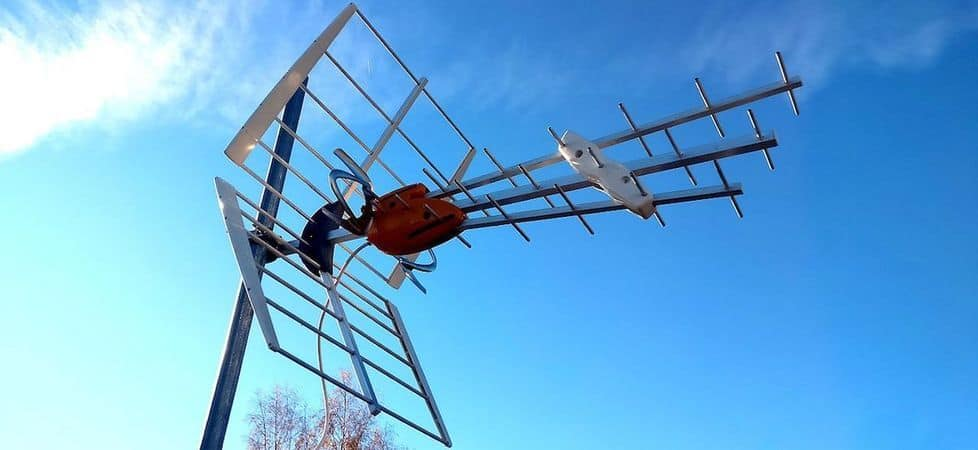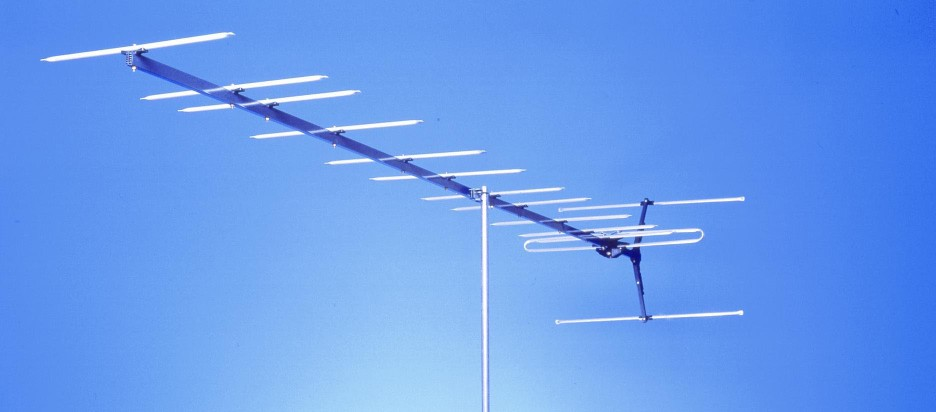Are you tired of paying for expensive satellite TV packages? Are you tired of buffering
and pixelated images? If you are, then you've probably heard of long-range TV
antennas.
Long-range TV antennas that receive signals up to 500 miles away
have been the subject of much interest and debate in recent years. Some people claim
that these antennas can solve all your
TV reception problems, while others think they
are nothing more than a myth.
So, Are outdoor long-range TV antennas (500 miles) a myth or a fact? Let's dig into
this topic and find out.
How
Long-Range TV Antenna Work?
Have you ever wondered how a long-range TV antenna can take a signal from miles away
and beam it directly to your screen?
This may seem like magic, but the answer is actually quite simple.
Long-range TV antennas work by capturing signals from broadcast stations and
transmitting them to your TV. This is done by amplifying the signal and sending it to
your screen through a coaxial cable, which gives you a clear picture. So, you can enjoy
high-quality pictures and sound at home through the remote TV antenna.
You can see the difference between the remote TV antenna and the normal TV antenna through the flow chart below:
Wait a minute, I guess you want to ask: what if they don't perform as well as we
expect? What determines the performance of long-range TV antennas?
Keep reading for the answers you need...
Factors Affecting Long-Range TV Antenna Performance
①Antenna Height and Placement: The height and
placement of the antenna play a significant role in its performance, with a higher
placement generally providing better results.
②Frequency and Gain: Long-range TV antennas
need to be tuned to specific frequencies and have a higher gain, which determines how
much signal the antenna can pick up.
③Line of Sight: A clear line of sight between
the antenna and the broadcast tower is essential for optimal signal reception.
④Weather Conditions: Weather can also impact
the performance of a long-range TV antenna, particularly in areas prone to high winds,
storms, or heavy precipitation.
Thus, a range of factors, from signal frequency to geographic location, can affect an
antenna's ability to pick up a signal.
However, what about those outdoor TV antennas that boast a range of up to 500 miles?
Are they really as good as advertised? Is the 500-mile range just a myth, or are there
really some antennas capable of such a feat?
This is where things get interesting. Keep scrolling for the big reveal...
The Reality of 500-Mile Outdoor TV
Antennas
The shortest answer is no.
While long-range TV antennas can receive
signals from farther away than short-range TV antennas, they are limited in how far they
can receive signals. Its actual receiving distance will depend on what is listed above.
Also, be aware that advertised TV antenna
ranges are often based on ideal conditions, which may not exist in the real world. For
example, a range of 500 miles may only be available on flat, open terrain with no
obstructions and a clear line of sight to the tower. But the range may be much shorter
in hilly areas or in cities due to interference and signal blocks.
It's also important to note that a 500 mile TV
antenna is not necessary for most people as most TV stations are on the shorter range
and a TV antenna with a range of 50-100 miles is usually more than enough.
All in all, while a 500-mile TV antenna sounds
cool, it can't pick up a TV signal from that distance. The actual range of the antenna
is affected by several factors, including terrain, obstructions, and the quality of the
antenna itself. A more modestly sized antenna with a range of 50–100 miles will usually
suffice for most users.
Attention! Just because a 500-mile long-range
TV antenna is a myth doesn't mean that a remote TV antenna is useless. All you need to
do is choose a TV antenna that suits your local terrain and broadcasting conditions.
Ready for the good stuff?
How to Choose the Right Long-Range TV Antenna?
When choosing a remote TV antenna, you should consider these factors:
First, you need to consider
the range of your antenna. A range of 500 miles
sounds impressive, but it's important to keep in mind that this range will vary based on
the signal strength in your area.
You also need to consider the design of the antenna. Directional antennas
are great for long distances because they can be pointed directly at the tower. However,
if there are multiple towers in your area, an omnidirectional antenna may be a better
choice because it can pick up signals from all directions.
Finally, you need to consider the installation process. Some remote TV antennas
require professional installation, while others can be installed by yourself. Make sure
to choose an antenna that is within your installation skill level.
You will find that after considering the above factors, choosing the right antenna is a
breeze.
Summarize
All in all, the idea of a long-range TV antenna capable of picking up signals
from 500 miles away sounds appealing, but unfortunately, it's a myth, and the laws of
physics and technological limitations make such an antenna impossible. It is important
for you to understand the reality of
TV antennas and choose the one that suits your
needs and location accordingly.



